On March 9, 2024, the Miss World 2023 pageant was held to choose a beauty queen once again. The crown went to Krystyna Pyszková of the Czech Republic. To honor this event, we decided to take a look at the history of the contest and find out how the jury’s approach to assessing women’s beauty has changed over the decades.
1950s: it all started with a scandal.

Kiki Håkansson (Sweden), Miss World 1951
In 1951, as part of the Festival of Britain, the Festival Bikini Contest was held, which journalists later named Miss World. This event became a scandal because in those days a bikini was considered indecent.
Swedish beauty Kikki Håkansson became the winner of this first pageant. And to this day, she remains the only winner to have received her crown while wearing a bikini. Later, the finalists would wear a one-piece swimsuit or evening gown to the awards ceremony.

Denise Perrier (France), Miss World 1953, and Marita Lindahl (Finland), Miss World 1957
Despite the 1951 bikini scandal, the contest founder Eric Morley was pleased with the public attention and decided to hold the pageant annually. His requirements for potential participants were as follows: single women without children aged 17 to 27.
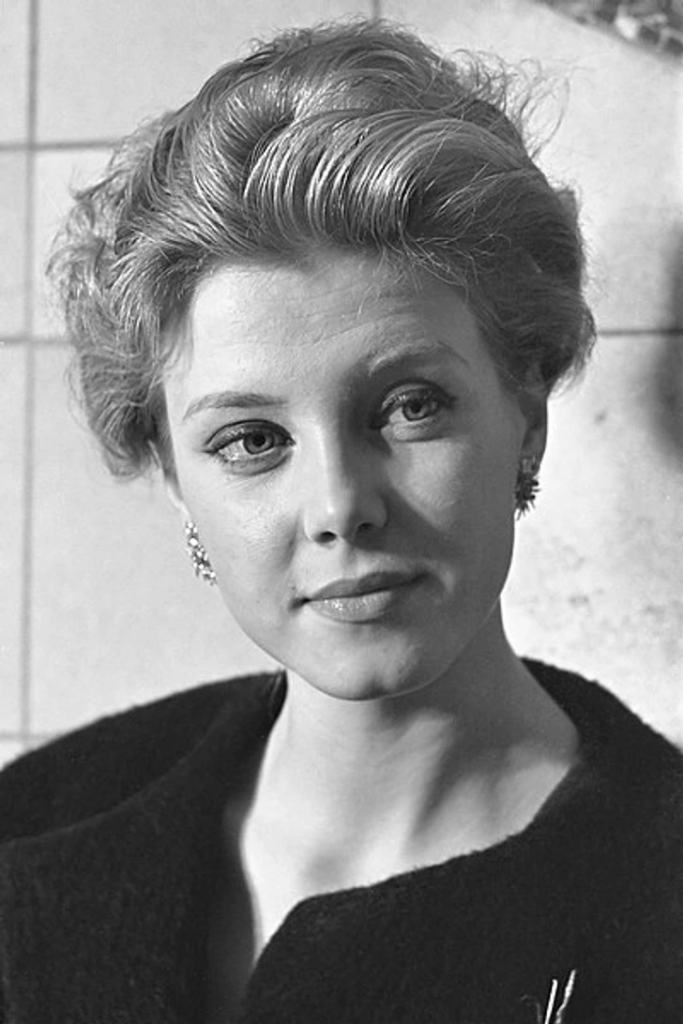
Corine Rottschäfer (Netherlands), Miss World 1959
In 1959, a major British television channel agreed to broadcast the pageant, thus making it even more popular. Corine Rottschäfer found herself in a delicate situation before the awarding ceremony when she discovered that her evening gown had holes in it. Another contestant lent Corine the dress and eventually finished third, while Corine became the winner.
1960s: Miss World is gaining momentum.

Katharina Lodders (Netherlands), Miss World 1962
In the 1960s, the Miss World pageant became one of the most watched television shows. The cash prize for the winner was increased from £500 to £2,500. In 1961, the requirements for contestants were also changed: the upper age limit was now 25 years old.
Katharina Lodders, who was crowned in 1962, addressed these criteria in her own way. On collecting the award, she said out loud, «I don’t think I’m the most beautiful girl in the world — I am the most beautiful girl here.»

Ann Sidney (Great Britain), Miss World 1964
In 1964, the winner was Ann Sidney, who later made a career in the movie industry. By the way, Morley introduced a new rule that same year: he forbade the mothers of contestants to accompany their daughters. The reason why was because the mother of one of the girls caused a lot of inconvenience to the organizers, getting involved in their work.
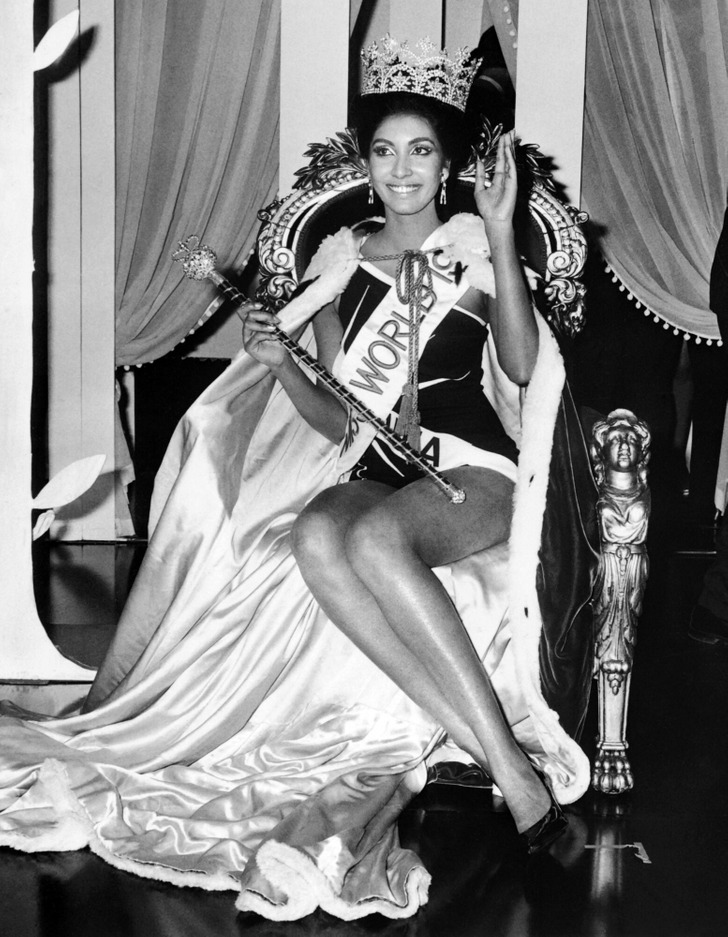
Reita Faria (India), Miss World 1966
In the late 1960s, the contest became even bigger. In 1966, Morley sent invitations to more than 70 countries, 66 of which were happy to respond. And in 1968, for the first time in the history of the event, a married girl was allowed to participate. In the 1970s, however, a strict criterion for the marital status of contestants was reintroduced: single only, period.
1970s: feminists change the essence of the pageant.
Jennifer Hosten (Grenada), Miss World 1970
The beginning of the decade was marked by a new scandal. In 1970, a week before the pageant, British feminists claimed that Miss World objectified women and threatened to interrupt the show. And they did it. When the event was in full swing, some female guests rose from their seats and began to blow whistles, jingle rattles and shout slogans. Later, the movie Misbehaviour starring Keira Knightley was based on these events.
In 1970, Jennifer Hosten won the crown. She became the first black woman to win it.
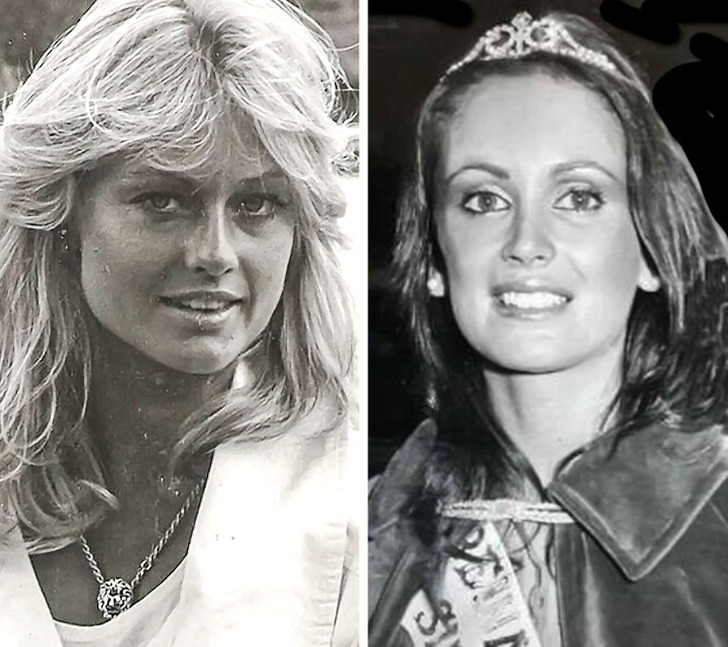
Marie Stävin (Sweden), Miss World 1977, and Silvana Suárez (Argentina), Miss World 1978
The conflict with feminists forced the organizers to think about the message the pageant was sending to the world. And in 1972, Eric Morley and his wife announced that the event would now be held under the slogan «Beauty With a Purpose.» The contestants were also required to present their charity projects to the jury.
1980s: «Beauty With a Purpose»
Mariasela Álvarez (Dominican Republic), Miss World 1982
In the 1980s, the slogan «Beauty With a Purpose» got another meaning: new tests of intelligence and personality were added to the contest program. In the eyes of the judges, the contestants’ personal qualities became as important as their looks.
Giselle Laronde (Trinidad and Tobago), Miss World 1986
In the second half of the decade, the contest became criticized again. The public in different countries didn’t like the fact that girls were judged only by representatives of Western countries. And in 1986, Morley decided to hold the preliminaries of the contest in Macau and give the Eastern judges the opportunity to select the contestants. The winner that year was Giselle Laronde from Trinidad and Tobago. This was the first time a representative of this country won the crown.
Ulla Weigerstorfer (Austria), Miss World 1987
And in 1987, the organizers ignored their own rule that allowed to participate girls aged only 17 to 25 and let a 26-year-old beauty to compete for the crown. Later, the upper age limit would be made 27 again.
1990s: crisis
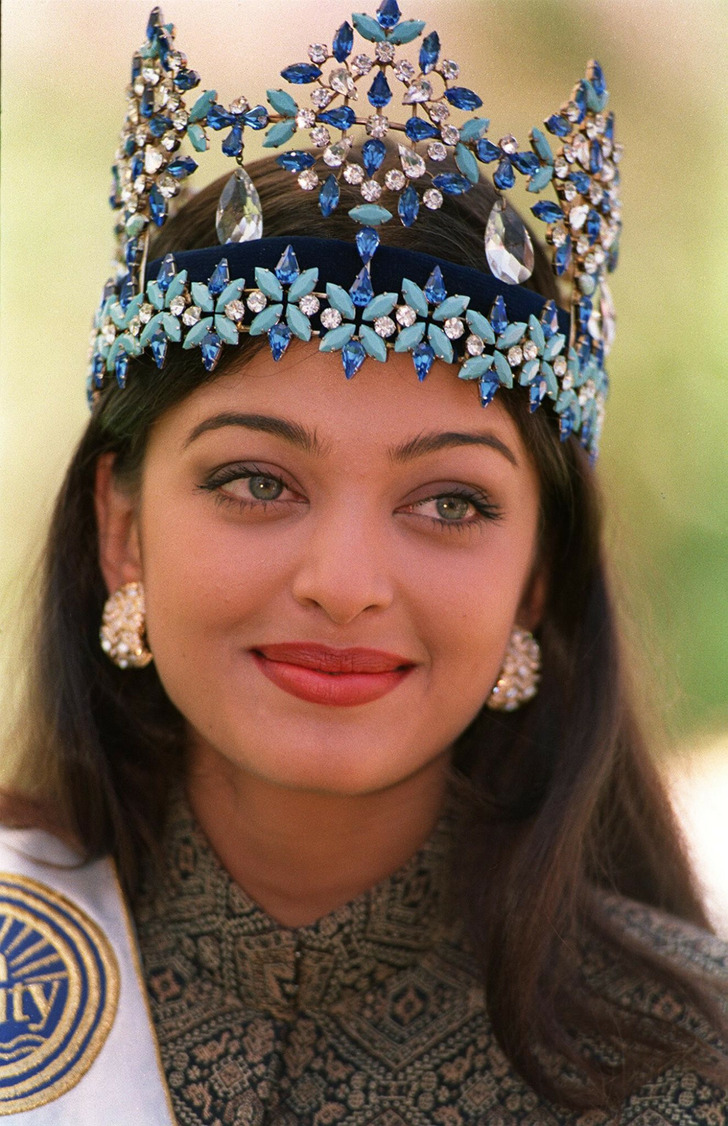
Aishwarya Rai (India), Miss World 1994
In the early 1990s, the popularity of the contest began to decline, and major TV channels stopped broadcasting it. But Morley wasn’t going to give up and managed to find ways to organize the contest at a lower cost.
Yukta Mookhey (India), Miss World 1999
In the second half of the decade, the organizers decided to gather a jury of representatives of different professions from all over the world in order to increase the interest of the audience. So, now beauties were judged by actors and actresses, athletes, magazine editors, and top models from different countries.
2000s: a woman takes the reins.
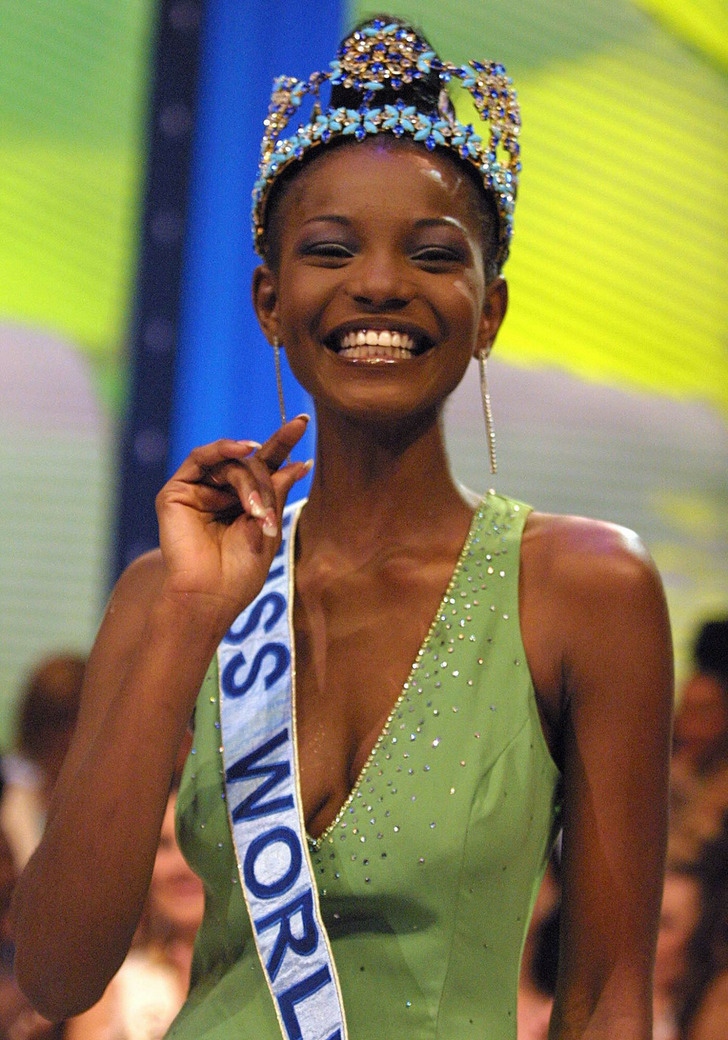
Agbani Darego (Nigeria), Miss World 2001
In 2000, Eric Morley passed away, so his wife Julia took on her husband’s work and decided to make some adjustments. For example, she called the pageant «stupid and horrible» and promised to make it «more positive» for women. She condemned the part of the show where girls had to first parade around in swimsuits and then give interviews about their life ambitions. «Not because I thought there was something wrong, horrible, and unnatural about swimsuits, but I thought you generally don’t feel comfortable if someone is interviewing you in a tux, and you are in a bathing suit,» Julia said.

Rosanna Davison (Ireland), Miss World 2003, and Kaiane Aldorino (Gibraltar), Miss World 2009
In 2004, Julia Morley surpassed her spouse by managing to gather a then record number of participating countries — 107 girls took part in the competition.
2010s: no swimsuits
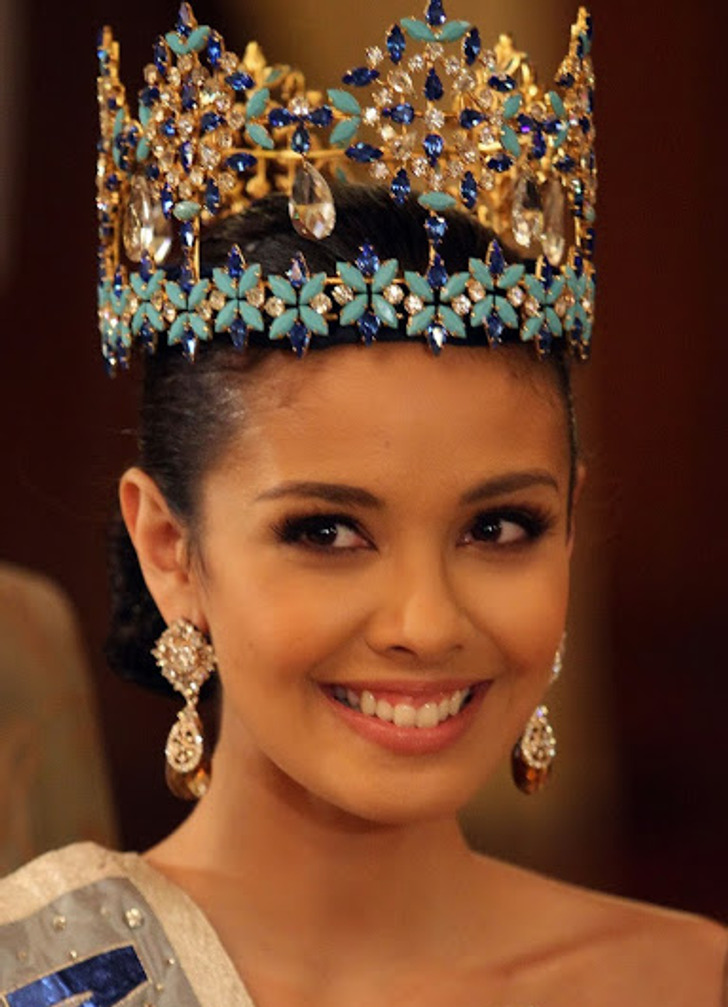
Megan Young (Philippines), Miss World 2013
In 2013, the contestants traveled to Bali. It was the first time the event was held in Southeast Asia. Also, for the first time in the history of the contest, a girl from the Philippines, Megan Young, won the crown.

Manushi Chhillar (India), Miss World 2017
Julia Morley, who had previously voiced her discontent with overly revealing costumes of contestants,
decided to remove the swimsuit competition from the pageant in 2015. She said, «We are really not looking at her bottom. We are really listening to her speak.»
2020s: what’s next?

Karolina Bielawska (Poland), Miss World 2021
The first event of the new decade wasn’t really big. In 2022, the number of countries participating in the contest was the smallest since 2003 — only 97. The winner was Karolina Bielawska from Poland. Next time, the Miss World jury gathered in 2024 and crowned Krystyna Pyszková from the Czech Republic.

Krystyna Pyszková (Czech Republic), Miss World 2023
Since modern trends criticize various beauty standards, there is a possibility that the Miss World organizers will choose to stop using any selection criteria for future contestants, following the example of Miss Universe. In 2023, the latter removed the upper age limit for contestants. And since Julia Morley suggests that it is personality that should be evaluated, we are sure that changes in the contest are not long to wait.
Speaking about Miss Universe. Here’s what 16 Miss Universe winners look like now.
Preview photo credit Harry Pot / Nationaal Archief / Wikimedia Commons, CC BY-SA 3.0 NL DEED, Historia de la belleza / Wikimedia Commons, EAST NEWS, Rajanish Kakade / Associated Press / East News
My Husband Always Left the House When His Phone Rang & Returned with Smelly Clothes

When James, my husband, started leaving the house in a rush, I was sure something sinister was happening. He did this several times without a clear explanation. His strange behavior had me thinking he might be ch_eating, as he refused to tell me the real truth. When I finally found out the truth of what he was doing, I was shaken to my core!
For ten years of our marriage, I thought I knew everything about him. But MAN, was I mistaken! What I believed I knew about him was that he was driven and successful. He always seemed so tough, almost impenetrable
For all the time James and I had been together, I’d never seen him cry! But I never doubted his love for me; I could simply feel it in his actions, even if he didn’t say it often. That was until the last few months when things started to change.
My husband began acting differently. He was rarely home, spent no time with the children, and every time his phone rang, he would immediately leave.
When I confronted him about the calls and the rushed departures, he made a claim I couldn’t fathom. “It’s urgent office work, my love.” I didn’t believe him at all, mainly due to the next thing I am about to share.
What had me doubting him was the oddest part of all this. My husband would come back home and IMMEDIATELY throw his clothes in the washing machine! His clothes were washed even if he’d only worn them that day for roughly an hour!
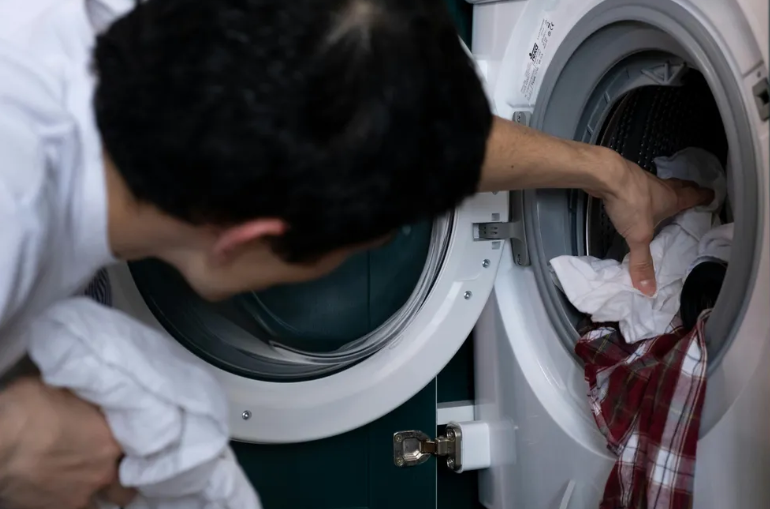
After that, James would take a shower, no matter how briefly he’d been gone. It was perplexing and, frankly, worrisome! No matter how I tried to get him to tell me the truth about what he was actually doing, James would stick to the work excuse.
I once snuck to the washing machine during his shower time. Doing my own investigations I pulled out his clothes to smell them for women’s perfume. Instead, I was hit with a stench I couldn’t explain! His clothes smelled PUTRID!
That evening, after my husband left in a hurry once again, I made a decision that I couldn’t take it anymore and was fed up. I needed to know what was going on! I grabbed my coat and tracked him down, following him to his destination.
My heart pounded as I trailed his car through the winding streets. He finally came to a halt when he parked in front of an old, run-down building on the edge of town.
I even wondered whether it was safe to go in or not and hesitated for a while before summoning the courage to enter. But what I witnessed inside left me SPEECHLESS!
I saw him with a bunch of people and they were doing something I couldn’t even comprehend as I stood there with my mouth open. James, my stoic, seemingly indifferent husband, was there in an APRON! MY man was serving food to a group of homeless people!

He was smiling, chatting, and laughing, a side of him I had NEVER seen before! It was like watching a stranger, but one who looked so much like the man I married! As if sensing my presence, James looked up, and our eyes met.
He froze, his face a mask of fear and surprise. My husband then quickly made his way over to me, taking off his apron as he walked. “Lily, I can explain,” he said, his voice trembling slightly. “Please do,” I replied, trying to keep my voice steady.
“What is all this? Why didn’t you tell me?” James took a deep breath, leading me to a quieter corner. “This is my project, the one I live for.” I watched him, waiting for the revelation that was about to change everything I thought I knew about my husband.
“I was born in poverty,” he began. “Sometimes, my family had nothing to eat. My single mom couldn’t feed me and my brother, so she gave us up for adoption,” James said. “We were taken in by a wealthy family who gave us everything we needed.”
I was shocked that I’d never known this about him. “But there was a catch. My new dad was strict; he believed in toughness and never showing vulnerability,” my husband continued. “I had to bury my soft side deep inside just to survive in that house because my adopted father forbade me from showing it.”
“He’s the one who taught me to be tough and determined, hence my work ethic.” Tears welled up in my eyes as I listened. This was a side of James I never knew, a past he had never shared. “So, you started this to show your true self?” I asked, my voice breaking.
“Yes,” he said, his eyes reflecting a mixture of pain and relief. “When I became successful, I realized I needed to find a way to express my soft side somewhere. I wanted to give back somehow.”
“I wanted to help people who are in the same position I once was.”
“So, I started this shelter, this kitchen, as my way of giving back and being true to who I am. It’s a part of me I’ve hidden for so long.” He explained how he started feeding poor and homeless people and sheltering them too.
What he did hit me hard, the weight of his hidden life pressing down on me. I understood now why he had been so secretive, why he NEEDED this outlet. It wasn’t just about work; it was about redemption and compassion.
I took his hand in mine. “James, you should have told me. We could have done this together.” He squeezed my hand, a tear slipping down his cheek. At that moment, I fell deeper in love with him, realizing that he was human too.
I saw a side of him that made me see that he was a multifaceted being. “I was scared, Lily. Scared of what you might think, scared of appearing weak.”
“You’re not weak, my darling,” I said firmly. “Showing your soft side, helping these people, that’s the STRONGEST thing you can do!”
Since then, our relationship changed. I finally understood why he was secretive and washed his clothes after every trip. I joined James in his mission. I started volunteering at the shelter and bringing the children along too.

They learned the value of kindness and humility, and at the same time saw their father in a new light! We grew closer than ever, united by his hidden passion and newfound openness. My husband showed me that true strength lies in being able to show your vulnerability.
I also learned through him that inner strength lay in giving WITHOUT expecting anything in return. The act of giving was a gift of its own. Our family became stronger, bound by love. We were united by his formerly hidden compassion, newfound openness, and a shared commitment to helping others.
Luckily for Lily, her husband wasn’t doing anything wrong on his random trips.

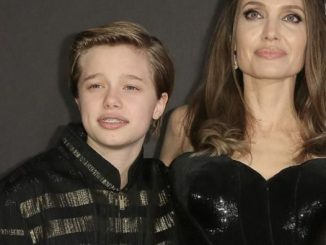

Leave a Reply